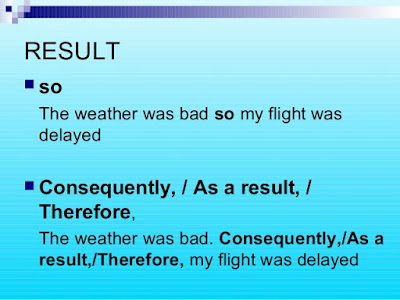This blog is aimed at giving help to teachers and students either in class preparation or in revision of certain tricky language points.
dimarts, 1 de desembre del 2020
CONNECTORS OF SEQUENCE
dilluns, 2 de novembre del 2020
PRESENT CONTINUOUS
CLASS GAME IN TEAMS
Affirmative form
Exercise 1: AM, ARE, IS quizExercise 2: write the verbs into the Present Contiunous.(with pictures)
Exercise 3: Put in the verbs in brackets into the gaps. Use LONG forms only ("is", not "´s")
Exercise 4: Put in the verbs in brackets into the gaps. Use LONG forms only ("is", not "´s").
Exercise 5: write the verbs in the Present Contiunous.
Exercise 6: write sentences in the Present Contiunous (with pictures)
Negative form
Exercise 1: Transform the affirmative sentences into negative sentences.
Exercise 2: Put in the verb in brackets into the gap and use LONG forms only.Interrogative form
Exercise 1: Put in the verbs in brackets into the gaps.Exercise 2: Put in the verbs in brackets into the gaps.
Exercise 3: Write questions with the prompts.
Exercise 4: Write questions with the prompts.
Mixed forms
Exercise 1: Three-option quizExercise 2: write the verb in the affirmative, negative or interrogative form.
Exercise 3: complete the table with the correct form.
Exercise 4: Put in the verbs in brackets into the gaps.
Time expressions / Signal words with the Present Continuous
Exercise 1: Find the correct signal word for the sentences in the Present Progressive.Exercise 2: Choose the correct signal word.
Now go to the next post, Present Simple versus Present Continuous
PRESENT SIMPLE
Exercise 1: choose "-s" or nothing.
Exercise 2: choose "-s" or nothing.
Exercise 3: choose "-s" or nothing.
Exercise 4: write affirmative sentences.
NEGATIVE SENTENCES
Exercise 1: choose DON'T or DOESN'T.
Exercise 2: write negative sentences.
Exercise 3: write negative sentences.
Exercise 4: change from affirmative to negative sentences.
Exercise 5: change from affirmative to negative.
Exercise 6: change from affirmative to negative sentences.(with TO BE and HAVE)
QUESTIONS
Exercise 1: choose DO or DOES in the questions.
Exercise 2: choose DO or DOES in the questions.
Exercise 3: write questions.
Exercise 4: write questions with question words. (more difficult)
Exercise 5: choose the correct short answer (verb TO BE or DO / DOES)
dilluns, 26 d’octubre del 2020
Past Simple
Pronunciation of regular verbs
Full list of irregular verbs with the pronunciation
Exercise 1: Write the correct verb in the affirmative form (regular and irregular verbs)Exercise 2: write the verb in the negative form
Exercise 3: write questions in the Past Simple
Exercise 4: complete the sentences (affirmative, negative, questions)
diumenge, 25 d’octubre del 2020
Relative clauses (defining and non defining)
Other videos: What's up living English The Grammar Game Show
EXERCISES
Write relative sentences using THAT or WHO
Choose one of the following relative pronouns who, which or whose
Write sentences using WHO, WHOSE and WHICH
Choose the correct answer (two choices)
Choose the correct relative pronoun or adverb (defining and non defining) 3 choices
ADVANCED RELATIVE CLAUSES
maryenglishblog: Advanced non-defining Relative Clauses
EXERCISE: multiple-choice exercise
EXERCISE : multiple-choice
EXERCISE: 25 multiple-choice questions
GAME-LIKE EXERCISE: complete the sentence
dijous, 22 d’octubre del 2020
Connectors SO, BECAUSE, BUT, SO
dimarts, 20 d’octubre del 2020
dilluns, 19 d’octubre del 2020
Connectors - linkers
CONNECTORS OF CAUSE AND EFFECT: because, because of, due to, owing to, for, as, since, so, therefore, consequently, as a result, that's why, for this reason,
CONNECTORS OF CONTRAST: However, despite, although, on the one hand, whereas...
CONNECTORS OF PURPOSE: so as to, in order to, so that ...
CONNECTORS OF TIME CLAUSES : as long as, as soon as, after, while, when...
CONNECTORS USED IN CONDITIONAL CLAUSES: if, unless, as long as, provided that, providing that,
CONNECTORS OF SEQUENCE
CONNECTORS IN GENERAL
Expressing conclusions
dijous, 15 d’octubre del 2020
HOW MUCH - HOW MANY // TOO MUCH - TOO MANY // ENOUGH
EXERCISE 1choose HOW MUCH or HOW MANY
EXERCISE 2: write HOW MUCH or HOW MANY
EXPLANATION TOO MUCH / TOO MANY /ENOUGH (SPANISH)
Exercise 3: Choose too, too much, too many, enough to complete the sentences.
Exercise 4: write too much, too many, enough
There is - There are // some - any- a / an - much / many
EXERCISE 1: choose There is - There are
VERY versus MORE and A LOT
VERY means "to a great degree" . We use very before adverbs and adjectives to add emphasis.
 |
| IT'S VERY COLD |
CONNECTORS OF CONTRAST: however, despite, although, on the one hand, whereas...
Explanation (very complete)
Explanation: on the other hand, while, whereas
Explanation: while, whereas
Explanation: difference EVEN THOUGH / HOWEVER
Exercise 1: choose DESPITE or ALTHOUGH
Exercise 2: choose IN SPITE OF or ALTHOUGH
Exercise 4: CONTRAST. Two-answer choice (nevertheless, in contrast, on the contrary, on the one hand, while, although, despite, however, whereas, in spite of, but)
Connectors of cause and effect
dimecres, 14 d’octubre del 2020
ALL TENSES
dimarts, 6 d’octubre del 2020
Dual State and Action Verbs (stative or dynamic verbs)
Exercise 1: choose "stative" or "dynamic"
Exercise 3: choose (two options)
Exercise 4: choose (two options)
Exercise 5: choose (two options)
Questions in the Simple Present and Present Continuous
PRESENT SIMPLE
Exercise 1: choose DO or DOES in the questions.Exercise 2: choose DO or DOES in the questions.
Exercise 3: write questions.
Exercise 4: write questions with question words. (more difficult)
Exercise 5: choose the correct short answer (verb TO BE or DO / DOES)















































